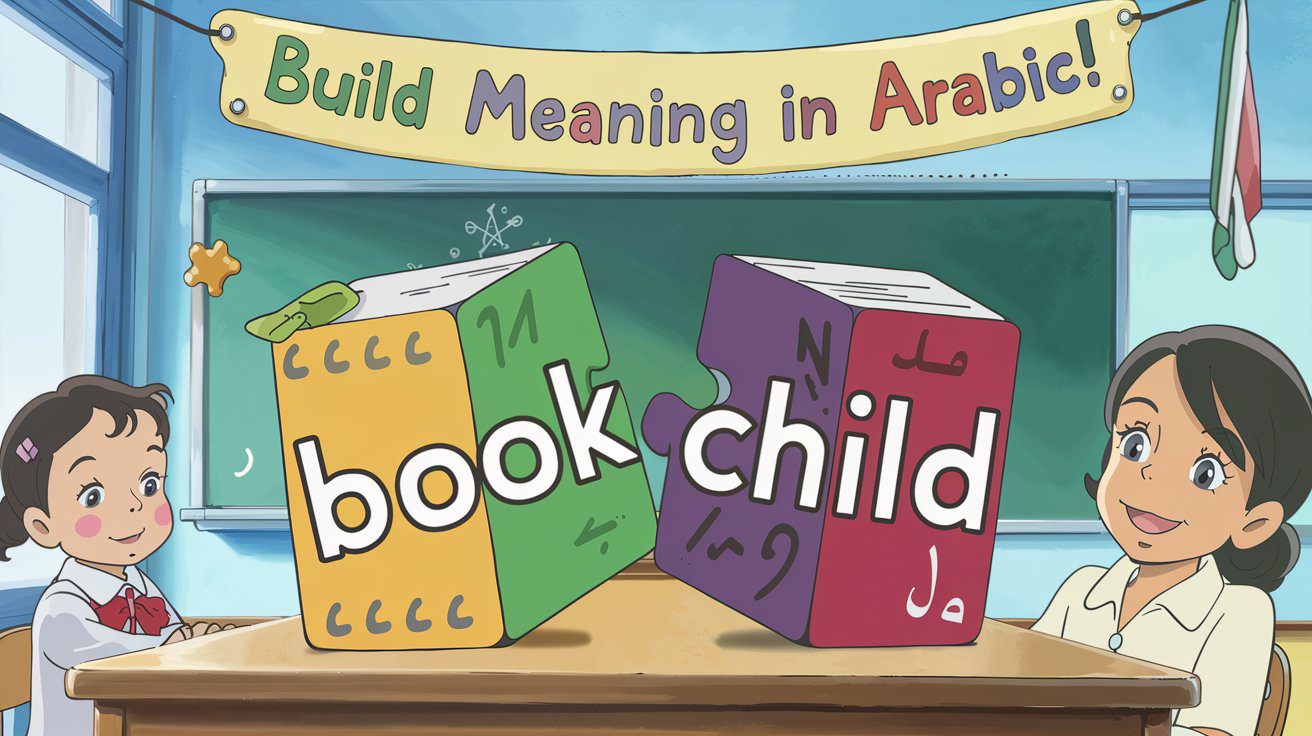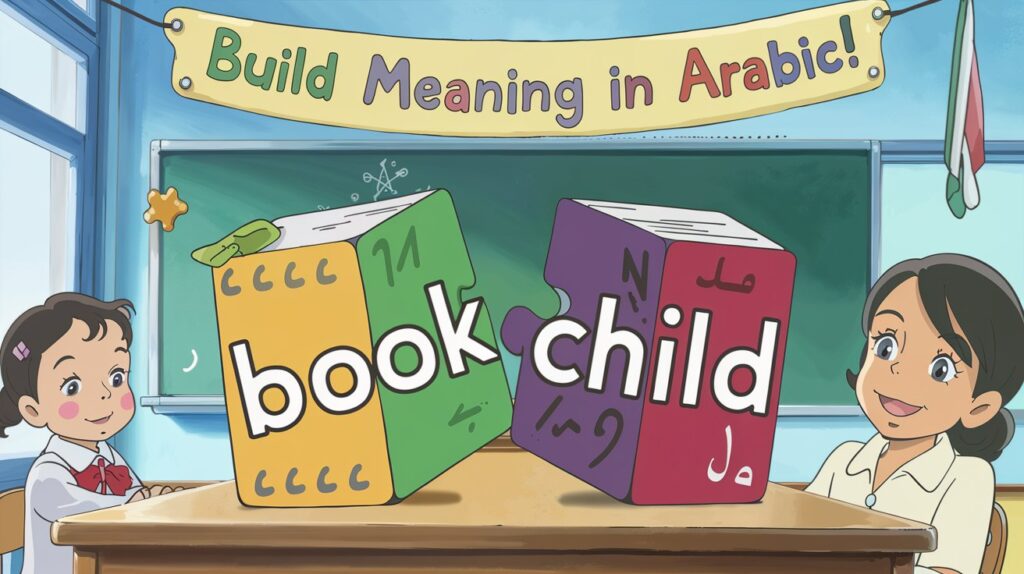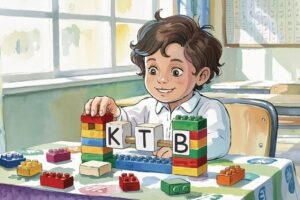
Build Arabic Phrases Like a Pro: The Two-Part Formula of Idāfah (الإضافة)
🌱 Introduction: Why Idāfah Is the Secret to Fluent Arabic
The answer lies in one of Arabic’s most powerful grammar tools — Idafah. This guide to Arabic Idafah grammar for beginners will show you how two simple words can join to create deep meaning.
At Roots Muslim School, we love showing how Arabic grammar isn’t about memorizing rules — it’s about unlocking meaning. And the Idāfah structure does exactly that: it turns two simple words into one powerful phrase.

🧱 Step 1: Understand the Two Building Blocks
Think of Idāfah like two puzzle pieces that lock together perfectly.
1️⃣ The first noun is called المُضاف (al-muḍāf) — it’s the thing being owned.
2️⃣ The second noun is المُضاف إليه (al-muḍāf ilayhi) — it’s the owner.
Let’s look at an example:
📘 كِتابُ الطِّفْلِ (kitābu ṭ-ṭifli) → “the child’s book.”
Here’s how it works:
- كِتابُ (kitābu) → the book (thing being owned)
- الطِّفْلِ (aṭ-ṭifli) → the child (the owner)
Together, they form كِتابُ الطِّفْلِ, an Idāfah phrase meaning “the child’s book.”
🧩 Step 2: Why Idāfah Is So Special
The Idāfah construction doesn’t use “of” or an apostrophe like English does.
Instead, it expresses ownership and relationships naturally — all within the word endings.
Let’s see some examples:
- بَيْتُ المعلِّمِ (baytu al-muʿallimi) → “the teacher’s house.”
- قَلَمُ الطالِبِ (qalamu aṭ-ṭālibi) → “the student’s pen.”
- كِتابُ اللهِ (kitābu Allāhi) → “the Book of Allah.”
Notice how the first noun never takes tanwīn (no “ـٌ”), and the second word is always majrūr (ends in kasrah) — that’s your grammar clue!
🧠 Step 3: How to Spot Idāfah Like a Detective
When you see two nouns side by side — no “ال” on the first word, and the second word ending with a kasrah — that’s an Idāfah phrase!
🕵️♀️ Example:
بيتُ الطالِبِ جميلٌ.
Baytu aṭ-ṭālibi jamīlun.
→ “The student’s house is beautiful.”
Here, بيتُ الطالِبِ is the Idāfah.
Try spotting others in the Qur’an or your Arabic books — you’ll start noticing how common and beautiful they are!
🎮 Step 4: Roots Classroom Activity — “The Idāfah Builder!”
Turn grammar into a game:
- Give students two word cards (e.g. قَلَم – الطِّفْل).
- Ask them to combine the two to form an Idāfah phrase (قَلَمُ الطِّفْلِ).
- Let them “lock” the cards together like puzzle pieces 🧩.
By physically connecting the words, children visualize how ownership and meaning are built in Arabic — one phrase at a time!
🌿 Step 5: The Qur’an Connection
Idāfah is everywhere in the Qur’an — each phrase holds deep meaning.
For example:
- عَبْدُ اللهِ (ʿabdu Allāhi) → “the servant of Allah.”
- رسولُ اللهِ (rasūlu Allāhi) → “the Messenger of Allah.”
When students learn Idāfah, they’re not just learning grammar —
they’re unlocking the beauty and structure of the Qur’an itself.
🌸 Conclusion: From Rules to Meaning
Understanding Arabic Idafah grammar for beginners helps students connect language and meaning. At Roots, we teach these concepts through visuals and storytelling, not memorization — making grammar come alive.
So next time you see phrases like Kitāb Allāh or Bayt an-Nabī, remember —
you’re looking at the heart of Arabic expression. 💛
🪶 Roots Reminder
At Roots Muslim School, we teach Arabic through visuals, stories, and connection, not just repetition.
Because true understanding grows when children see how language builds meaning — piece by piece.



